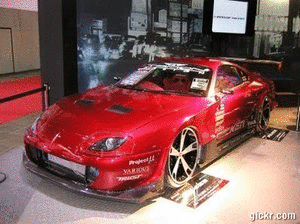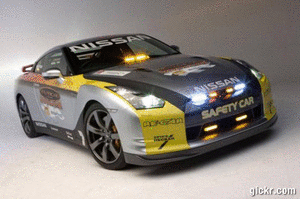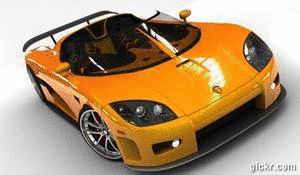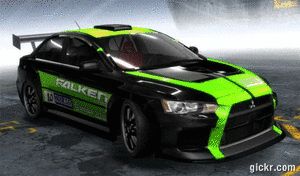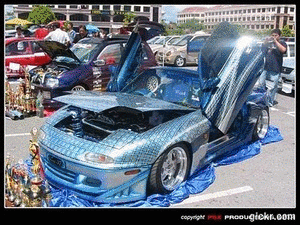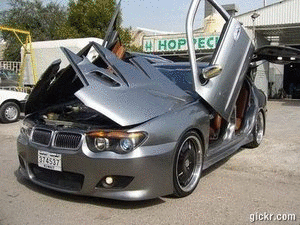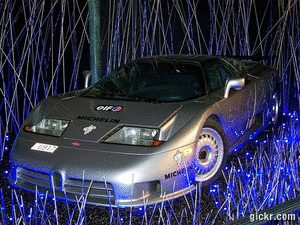The driver selects a mode by maneuvering the gear shift lever, usually placed on the steering column or next to the driver's seat in the center console. In most cars it is necessary to depress the brake pedal before the gear selector can be moved from the Park position. Gear selection options usually include (P)park, (R)reverse, (N)neutral, (O)overdrive, (D)drive, (2)second and (L or 1)first gear in that order. The park or P mode locks the transmission mechanically. This restricts movement of car in any direction. This is achieved using a metal rod that engages the output shaft and prohibits movement.
An automatic transmission functions by automatically changing the gear ratios while determining the speed and load of the engine. Automatic transmissions have been available since the 1950s. The automatic transmission is controlled by selecting a desired gear from the hydraulic gear engagement system.
Automatic Transmission Gear Range Selector

Inside the Automatic Transmission
The automatic transmission consists of: a transmission case, planetary gear-sets, valve body, fluid cooler (in radiator) and a torque converter or fluid coupler. A torque converter utilizes transmission fluid as a coupling agent allowing the engine to run while the car is stopped without stalling the engine, then re-engaging to make the car move again once the RPM of the engine has increased. A series of clutches and band controlled planetary gear sets provide multiple forward gear ratios with a set reverse gear. The valve body is the hydraulic control center that receives pressurized fluid via the main transmission pump. This system is controlled by the PCM (power control module) in newer cars and mechanically in older ones (Pre-computer controls).
 Automatic Transmission cut-away Image
Automatic Transmission cut-away ImageTo prevent damage to the transmission the car should be at a complete stop before engaging the Park mode. Park mode is also one of the modes in which the car can be started; the other is the N or neutral position.
The neutral or N mode is used to disengage the transmission from the drive wheels to let the car move freely. The drive or D mode allows the car to vary its speed through a range of forward gears, usually 4 forward gears exist, but companies like Audi, BMW, Lexus and Mercedes Benz have developed a direct shift gearbox that has up to 8 forward gears.
The D4 mode is best suited for highway speeds and D3 can be used for around town driving. The first, 1 or L mode is meant to lock the transmission in first gear. In this mode a vehicle will move slowly but have more power that can be used when towing or on steep grades. The second, 2 or S mode is used to lock the transmission in the first two gears. This is used in extreme weather conditions like ice and snow and to govern vehicle speed.
Automatic Transmission Computerized operating system with ABS Brake System

Automatic transmissions make specific noises when a malfunction occurs. An automatic transmission is a hydraulic pressure driven system and it will make different noises than a manual transmission. If the transmission filter becomes plugged due to debris, it can make a whining noise. If the fluid level is low, you might hear a gurgling sound, caused by the pump scavenging fluid inside the transmission pan. Most internal failures are due to bearing, clutch or hard part failure. When such a failure occurs the transmission can make grinding, whirring sounds or no noise at all. When a transmission has a major failure you might hear a loud pop which could mean a drive component inside the transmission has failed and the car will stop moving.
Some manufacturers have developed a continuously variable transmission or CVT. This type of transmission has become popular during the past few years. Instead of having set gear ratios, the system can change the amount of forward acceleration over a wide range of speeds. Two cones or wheels of varying diameter are used to change the gear ratio. Hydrostatic drives use a variable displacement pump and hydraulic motor to vary the ratio continuously according to the amount of throttle being given and the amount of load on the vehicle.
Popular Problems Checks
1. Car will not go into gear:
- Gear selector cable has failed
- Brake lock solenoid/brake light swtich has failed not allowing the gear selector to move out of "Park"
- Excessively low transmission fluid (note: if car is operated for an extended amount of time with low fluid level the transmission will fail prematurely)
- Shorted electrical component not allowing the PCM to control the transmission. Example: shorted fuse
- Flex plate (flywheel) is broken completely not transferring engine power to the transmission.
2. Car goes into gear but then fades out of gear or is slipping while driving:
- Transmission fluid is low
- Transmission clutch discs or bands are worn out or burned
- Faulty transmission shift solenoid.
3. Car goes into gear but does not shift out of first:
- Blown fuse to the PCM controller
- Faulty vehicle speed sensor (VSS)
- Shorted second gear control solenoid
- Faulty transmission controller (PCM)
Tips About Common Problems and Fixes
- When the vehicle is cold or going around corners the transmission fades in and out of gear: In most cases this means the transmission fluid is low. The transmission will lose hydraulic pressure causing the transmission to drift in and out of gear. Check your transmission fluid when the car is on flat ground with the engine idling in park (some Chrysler products must be checked in neutral), add fluid as needed and recheck level.
- Transmission is shifting too late or not at all. On most cars the transmission is controlled by the PCM (powertrain control module) if the vehicle speed sensor fails the PCM has no input so the computer will not shift the transmission properly. The best way to check this sensor is to make sure the speedometer is operating correctly. If it isn't, replace the VSS and recheck. On older cars the transmission shifting is controlled by either a vacuum modulator or a throttle control valve cable (TV Cable). If the vacuum is impaired to the modulator or the throttle valve cable has failed the transmission will not shift correctly.
- The transmission skips second gear, shifts from first gear to third gear and the "service engine soon" MIL is illuminated. Scan the PCM to locate the transmission control solenoid that has malfunctioned, replace the solenoid then clear trouble codes and recheck operation.
Fluid Level and Leaks
 Transmission Planetary Gear Set
Transmission Planetary Gear SetOne of the most common complaints with an automatic transmission is leaking fluid. Leaks can occur from the driveshaft seals, the input shaft seal, pan gasket, or the ATF (automatic transmission fluid) cooler or line connections. When adding transmission fluid, do not overfill. Doing so could cause the fluid to become aerated, which will affect transmission operation. If there are no visible leaks, check the radiator for ATF in the coolant. The ATF cooler inside the radiator may be leaking and cross-contaminating the radiator coolant. You should also check the condition of the fluid, some discoloration and darkening is normal as the fluid ages, but if the ATF is brown or has a burnt smell, it is badly oxidized and a transmission service needs to be performed.
Most transmission problems can be prevented by changing the ATF and filter according to manufacturer specifications. In extreme conditions installing an aftermarket auxiliary ATF cooler parallel to the OEM ATF cooler is recommended. This prevents fluid overheating on vehicles used for towing or performance applications.
Fault Codes:
Fault codes can be set when the transmission controller or PCM detects a malfunction. Codes can be set by the computer when a command is sent, such as a 2-3 shift, but the transmission does not respond.
Diagnostic Procedure
- Clear all DTC's with a engine scan tool (diagnostic trouble codes)
- Start the engine and observe the MIL, if it does not illuminate continue to next step (malfunction inductor lamp or check engine light)
- Drive the vehicle while trying to maintain a constant throttle position as it accelerates up through all four gears. If the transmission is shifting properly, it should be in 4th gear by the time you reach 45 to 50 mph on level ground. Repeat this procedure from a standing start 3 to 5 times. Rescan the PCM for trouble codes, if none appear the problem could have been a onetime occurrence. If trouble codes have returned repair as needed and recheck system.
Tips: Never allow little noises go unattended, a small noise can cause a large noise and transmission failure. Avoid overloading a vehicle or towing beyond capacity this can cause premature transmission failure.
